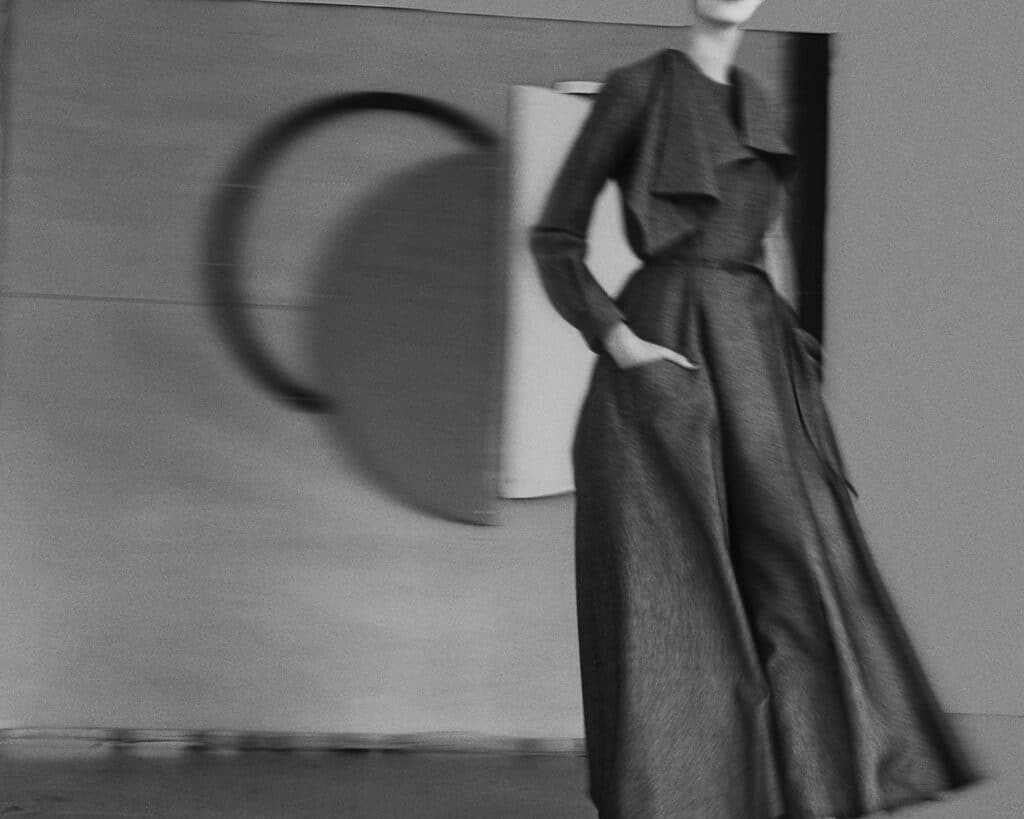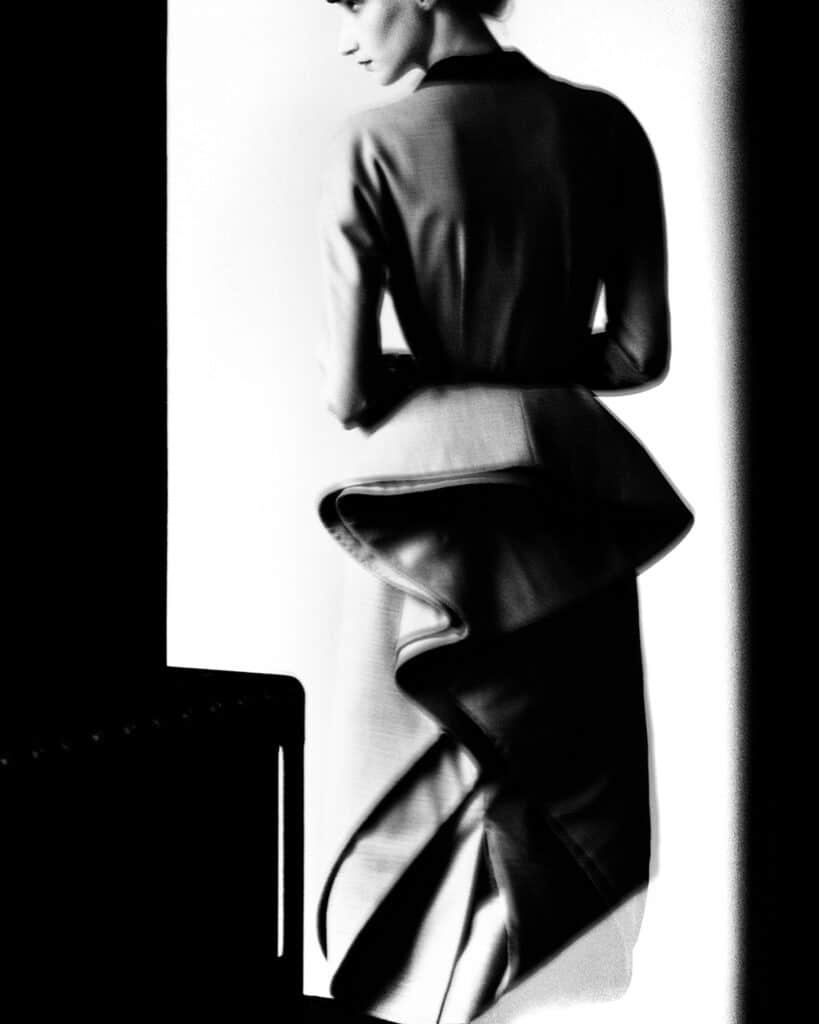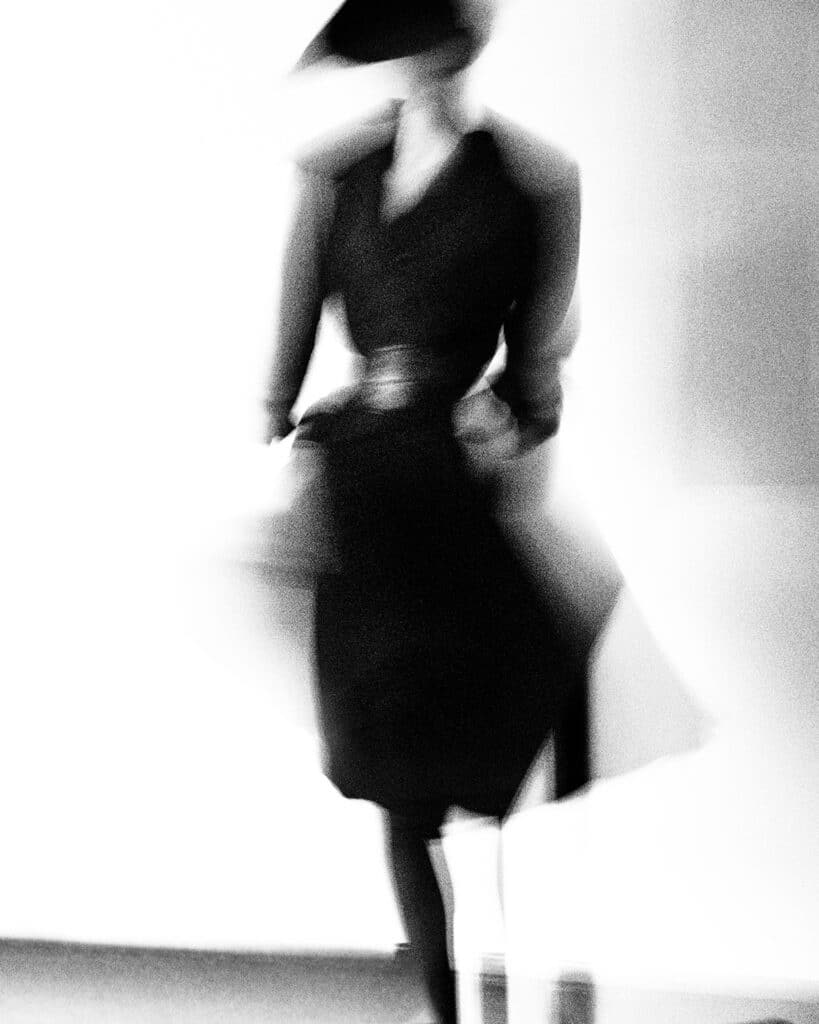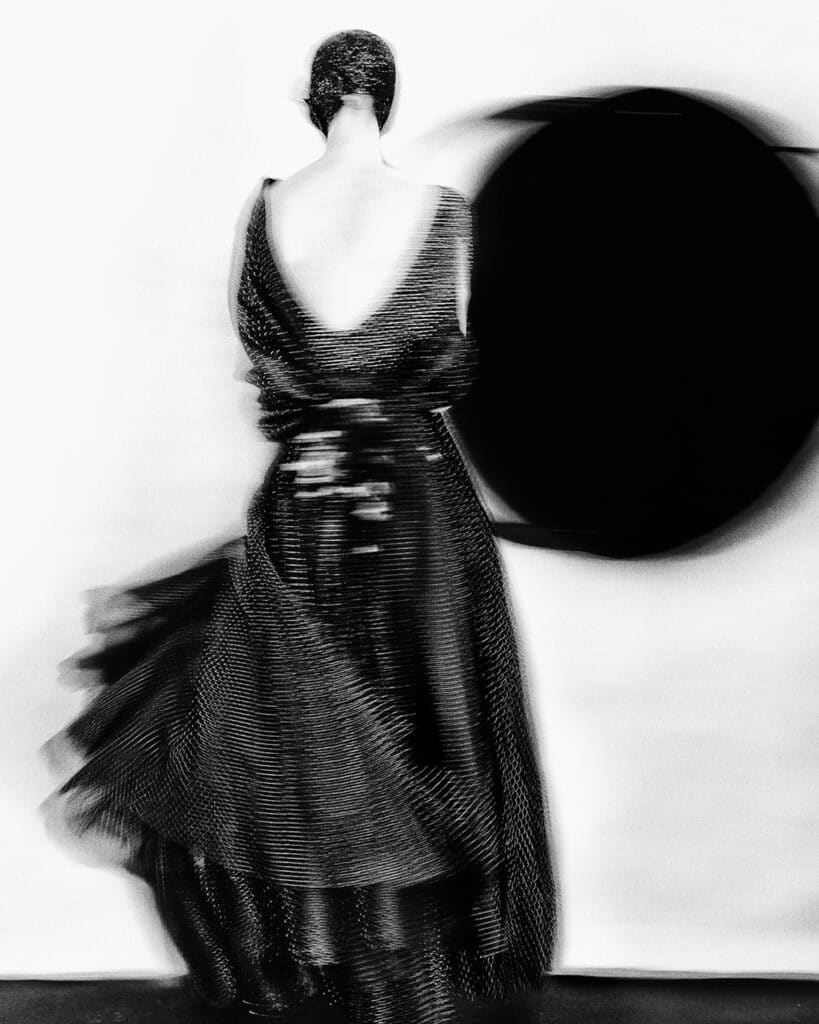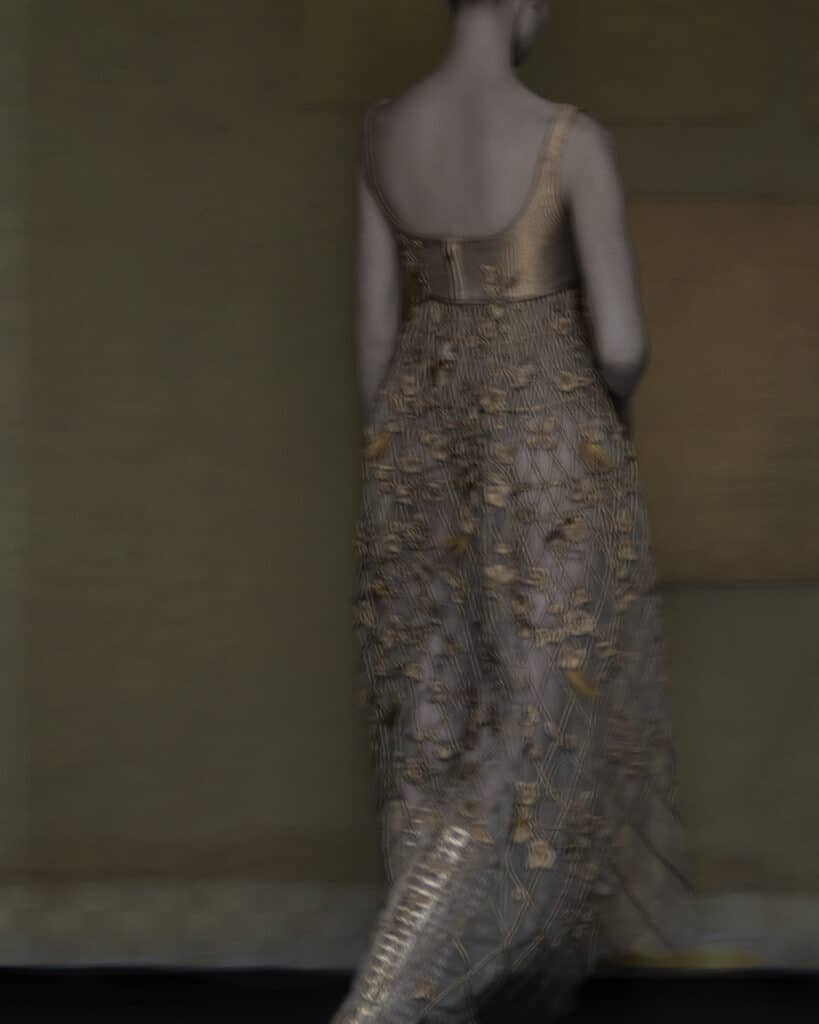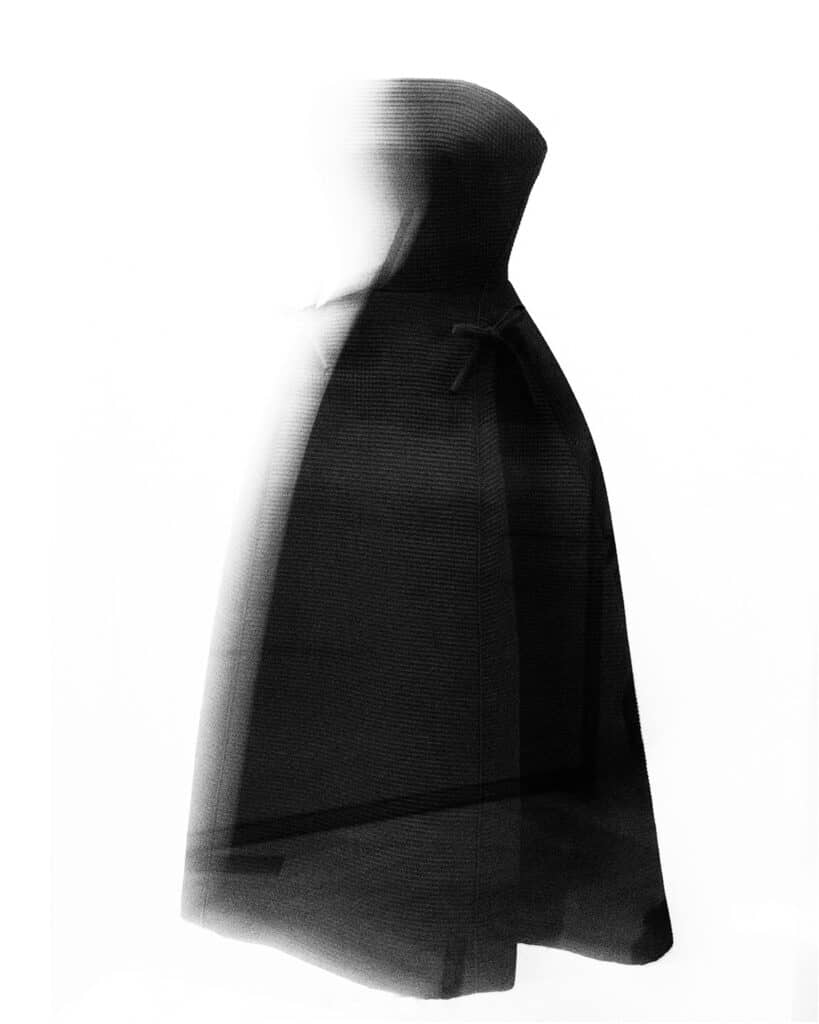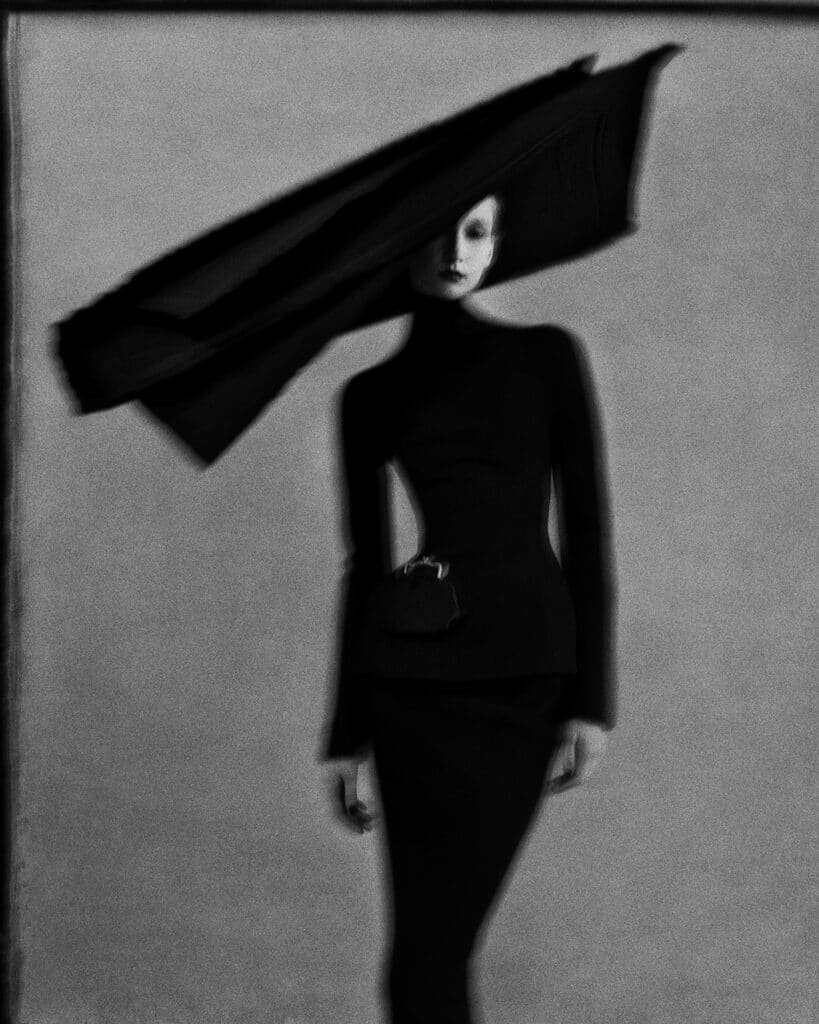What defines Dior? The iconic couture house has operated for over 75 years, and as trends come and go, the house has undergone transformations with each new creative director. Where does that leave its legacy? And what relevance do those original pieces, made all the way back in the late 1940s by Christian Dior himself, have today?
In a new box set, Dior par Sarah Moon, the photographer explores the archives of the storied fashion house and each incarnation through the years as different creative directors have helmed the brand. From Christian Dior himself to Maria Grazia Chiuri, Moon documents the evolution of the house through seven different eras since its founding in 1946.
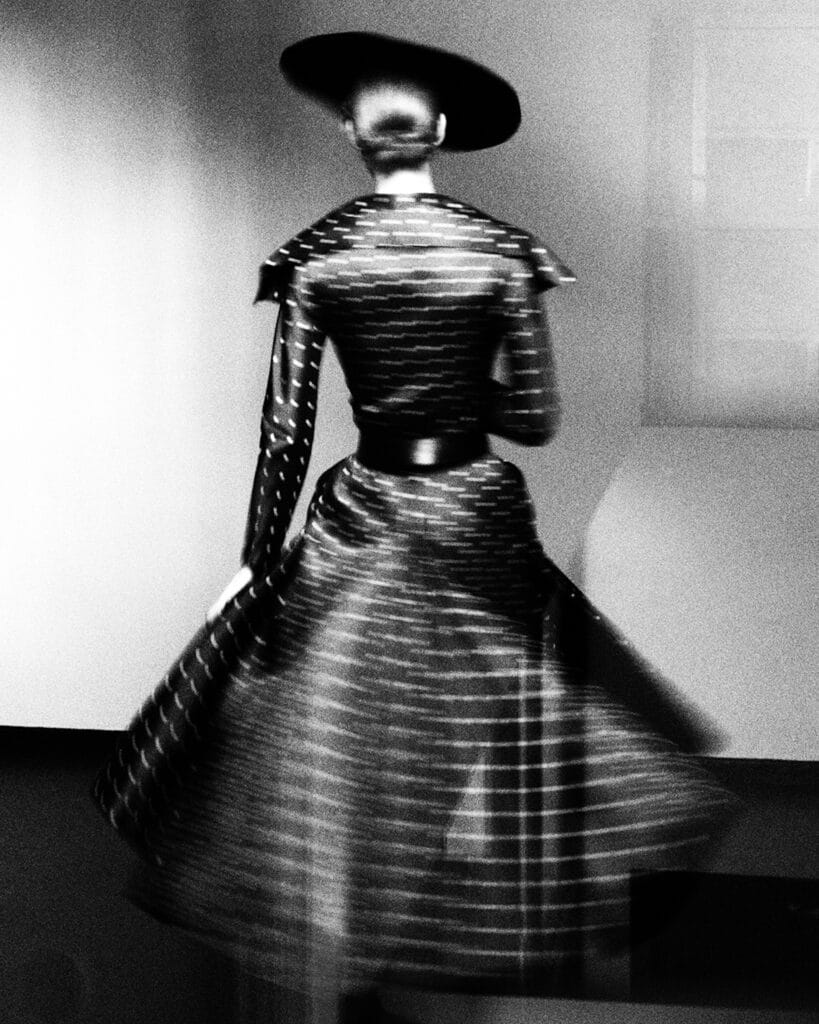
From New Look to Maria Grazia Chiuri
Divided into three sections, book one focuses on Dior’s beginnings and the famed New Look; book two focuses on the evolution of the house across each creative director; and book three is dedicated to its current director, Maria Grazia Chiuri.
First, there’s the New Look, created by Christian Dior in 1947, a look that would come to define the house for the better part of a century. A return to ultra-femininity with cinched waistlines and fuller skirts, the New Look was a stark contrast to the slimmed down styles of the 1920s and 30s and created a chain reaction that continues to influence the shape of fashion today. When asked which era of Dior was the most inspiring to photograph, Moon does not hesitate: “The New Look, which was a revolution in fashion, and inspired so many other designers.”
Through Moon’s hazy photographs, it’s the silhouette that’s most prominently featured, as in her photograph of the “Bar” suit, the hourglass shape created by broader shoulders and tiny waistlines. Juxtaposed against the delicate imagery of the fashion are photographs taken around the atelier and at the Fondation Corbusier. Pictures of stairwells and windows, the curve of a wall, even windows all feature in the imagery.
Why chose the Fondation as a location to photograph? “It’s a place I’ve always loved, where I’ve worked before,” says Moon. In the introduction to book one, she writes: “There was no better environment than Le Corbusier’s Foundation, with its minimalist style, its walls, its light and its reflections, so that she could move freely without posing, and reveal through the clothing, like a perfect agreement, the precise moment where the shot could take place.”
Out of time
At the opening of book two, titled “Dior apres Dior apres Dior,” Moon photographs a Gianfranco Ferré ensemble from the 1980s, captured in sepia to give it an aged patina. Other photographs are more straightforward in black and white: shots of hats on display heads, rows of mannequins waiting to be enrobed, and models photographed in Moon’s signature style of blur and movement. The overall effect is a timeless one: items from the archive, whether from the 2000s or the 1950s, all appear to come from the same period.
Not wanting any anachronisms, Moon was selective about her model, choosing Andrea Gutierrez and citing a sense of timelessness inherent in her. “The word says it all, she is out of time, out of the codes of the moment,” she explains. “Beyond the aesthetic qualities, beyond the beauty, it is a presence, a personality, a way of moving.”
In looking through the archives and travelling throughout the years, what inspired Moon the most? “All the qualities of handmade couture gathered, the range and beauty of the pieces preserved… The place itself, like a precious casket that restores the “perfume of an era” to the present day.” It is a triumph that those suits from the late 1940s remain in such excellent condition, and a testament to the level of craftsmanship employed in couture.
“Fabric is the sole vehicle of our dreams”
Book three is focused on the house today, under the helm of Maria Grazia Chiuri. Chiuri herself contributes an introduction, writing: “Sarah’s photographs for my collections also succeeded in expressing the importance of memory to me, especially since I have to deal with the extraordinary legacy of the House of Dior.” Creative directors of legendary houses often face a difficult challenge: staying true to the ethos of the brand, while bringing their own vision and an edge of modernity.
Chiuri strikes a delicate balance here, demonstrated by Moon’s photographs, finding ways to recreate that iconic silhouette created by Dior while playing with different textures and fabrics, making Moon’s models look as though they are floating in space, not weighed down by heavy garments. The book closes with an image of a bird flying across a gray sky as the sun, fighting through heavy clouds, slowly sets.
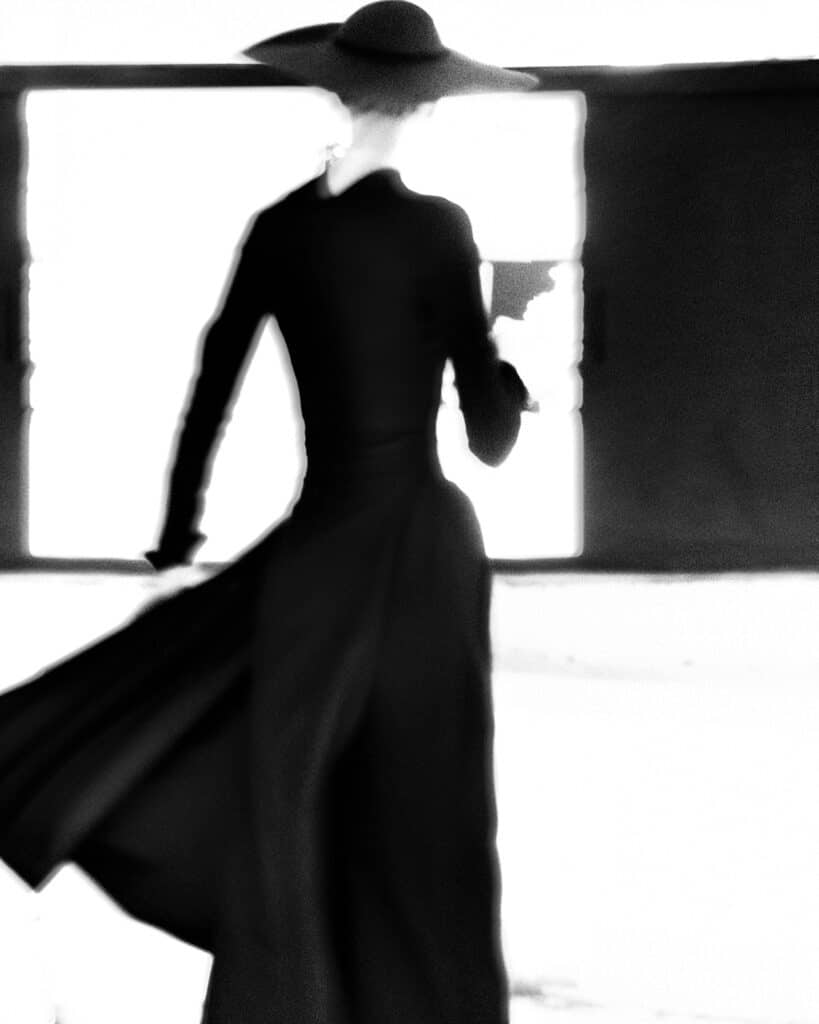
“I find that the evanescent, intimate and suspended in time atmospheres that emerge from these photographs perfectly capture my constant back and forth between past and present to imagine the scenarios of tomorrow,” continues Chiuri. “There is something special about them – something magical – because of the merging of the vision of the House of Dior, which has always tried to interpret and shape the contemporary woman, and Sarah Moon’s feminine gaze in an imperfect, porous and emotional way.”
Moon’s books are a wonderful homage to Dior himself, and an intriguing documentation of how fashion changes throughout the years, yet somehow stays the same. Moon’s photographs have a wonderfully romantic quality—towards the past, towards the future, towards wherever beautiful fashions can take us. “Fabric is the sole vehicle of our dreams“, Dior once wrote. “Fashion, in sum, comes from a dream, and dreaming is an escape”.
Dior par Sarah Moon, published by Delpire & Co, available since November 3, 2022.
